SUMMARY
This is AI generated summarization, which may have errors. For context, always refer to the full article.

MANILA, Philippines — The rains have arrived. A season has begun… and for every season, a time, a place — and dishes that mark the world around us.
Our ancestors lived by seasons. Their food was dictated by what was available and by what their bodies craved for. Summer was about the bounty of the fields, colors, and coolness. A cold period was dotted with warmth, heartiness, and richness designed to linger way after the meal.
The rains demand comfort, warmth, and soupiness. As drizzles and showers turn into pouring sheets, solace is sought in the hearth of home and under the sheets if possible. We surrender to doing less outside while finding more within the confines of a shelter.
With lesser demands on our day, we take time to do things instead of making time for them. And in a world of fast food, instant food, automatic food, and take-out menus, a meal that takes time and cannot be delivered is a thing of beauty.
In the case of sukiyaki, anyone who suggests it can be served pre-prepared or delivered has missed the whole point of the meal. The preparation at tableside is an integral part of the dish – not just a fancy way of presenting it.
Marks of taking time
Seeing the ingredients in their pre-cooked state, watching individual ingredients come together in the special sauce called the warishita, and then observing the skilful use of cooking chopsticks as they swiftly weave a pattern around the table – these are the true marks of taking time. These are rituals designed over many years and intended to be an inextricable part of the meal.
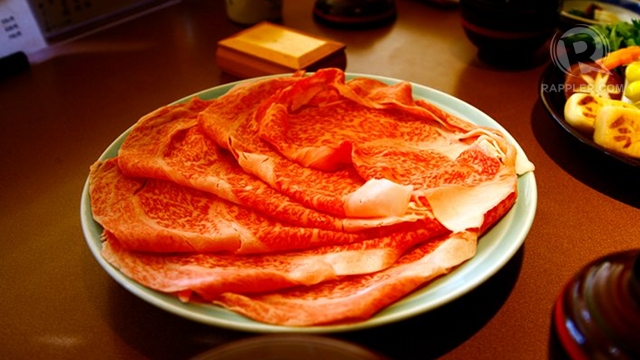
Sukiyaki’s beginnings are marked by many a tale. There is one about a medieval nobleman who stopped by a peasant’s hut after a hunt and ordered him to cook the game. The peasant realized that his cooking utensils were improper for the nobleman, so he cleaned up his spade (suki) and broiled (yaki) the meat on it.
Prior to the 1860’s there was no history of Japan eating beef. It was not until the Portuguese arrived that beef and dairy products were introduced into the cuisine. Research tells us that the first sukiyaki restaurant, Isekuma, opened in Yokohama in 1862.
Today, we’re spared from having a spade used to cook our meal. In its place is a shallow pan designed to heat evenly.
There are two basic methods of making sukiyaki: Kanto, or Tokyo-area style, and Kansai, or Kyoto/Osaka area style. In the Kanto way, the warishita’s ingredients are mixed into the pan and the beef is then simmered in it. In the Kansai way, the beef is first broiled and cooked together with the other ingredients before the sauce is poured into the pan.
What I find fascinating is the amount of broth served with the dish. In most restaurants outside of Japan, the dish has a significant amount of broth that goes with it – a rich, buttery, and extremely flavorful mix in which the beef, tofu, udon and shiratake noodles, shiitake mushrooms, leeks, and other vegetables swim. In Japan, there is just enough broth in your bowl to allow you to sip but not enough for you to drink.
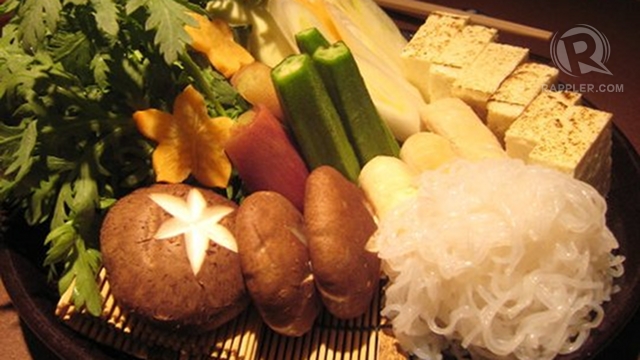
Which brings us to the warishita. How do you describe this? Special soy sauce, some sugar, mirin (sweet sake) all mixed together. Water is then added for volume and control of the mix. The right proportions weave a magic spell. Too light and the blandness is hard to ignore. Too thick and the richness overpowers the palate. It is the magic moment right after “great” and just before “too much” that warishita becomes the magic cauldron of sukiyaki sorcerers.
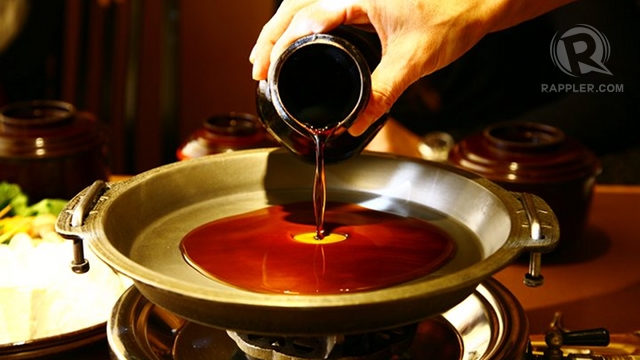
Finally, there is the dipping dish. A raw egg is broken into a serving bowl, one egg for each person. Some prefer to add a bit of soy sauce and the egg is lightly beaten. The meat and vegetables are dipped into this sauce before being eaten.

Key ingredient
At the core of sukiyaki is good beef. Really good beef. While one can see sukiyaki cuts at a number of groceries, there is nothing like the knife skills used to deliver the right thickness (or thinness) of beautifully marbled beef. This is why top grade sukiyaki is the quintessential gochisou — feast or treat, because good beef is the most expensive kind of meat. It’s what you have for a special occasion or just after payday in Japan.
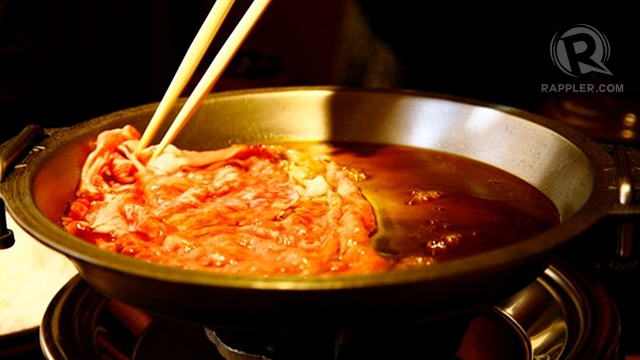
Imagine family and friends gathered around the dining table and helping themselves from a fragrant, steaming pan of food. Fluffy, puffy steaming hot rice on the side, everything looking familiar and yet special at the same time, a glass of your favourite drink or a cup of your favorite tea and you’re set.
The thin beef slice is slightly curled as you pick it up with your chopsticks. It has soaked up the sauce it was cooked in. You’ve also added some vegetables as you picked up the beef. You lightly dip it in the egg bowl as you see the steam rising from the end of your chopsticks. You smell the earthy yet sweet scent of the sukiyaki portion you’ve picked up. You guide the morsel to your mouth as you await the comforting mix of a buttery, sweet portion landing on your tongue. You then grab a portion of the rice and follow the sukiyaki in.
You slip into bliss.
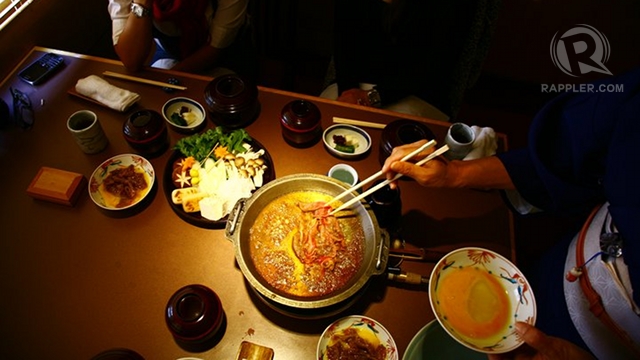
Now, the rains have become an excuse rather than a plague. The shelter has turned into a home. The meal has become an occasion and a season has again been welcomed. In a less hurried world, one finds comfort in time rather than a clock marking the day. The world turns just a tad slower, the conversations flourish and company matters. The magic cauldron has again weaved its spell. — Rappler.com
Tell Robert of your food memories and adventures via foodpornwriter@gmail.com.
Add a comment
How does this make you feel?
There are no comments yet. Add your comment to start the conversation.